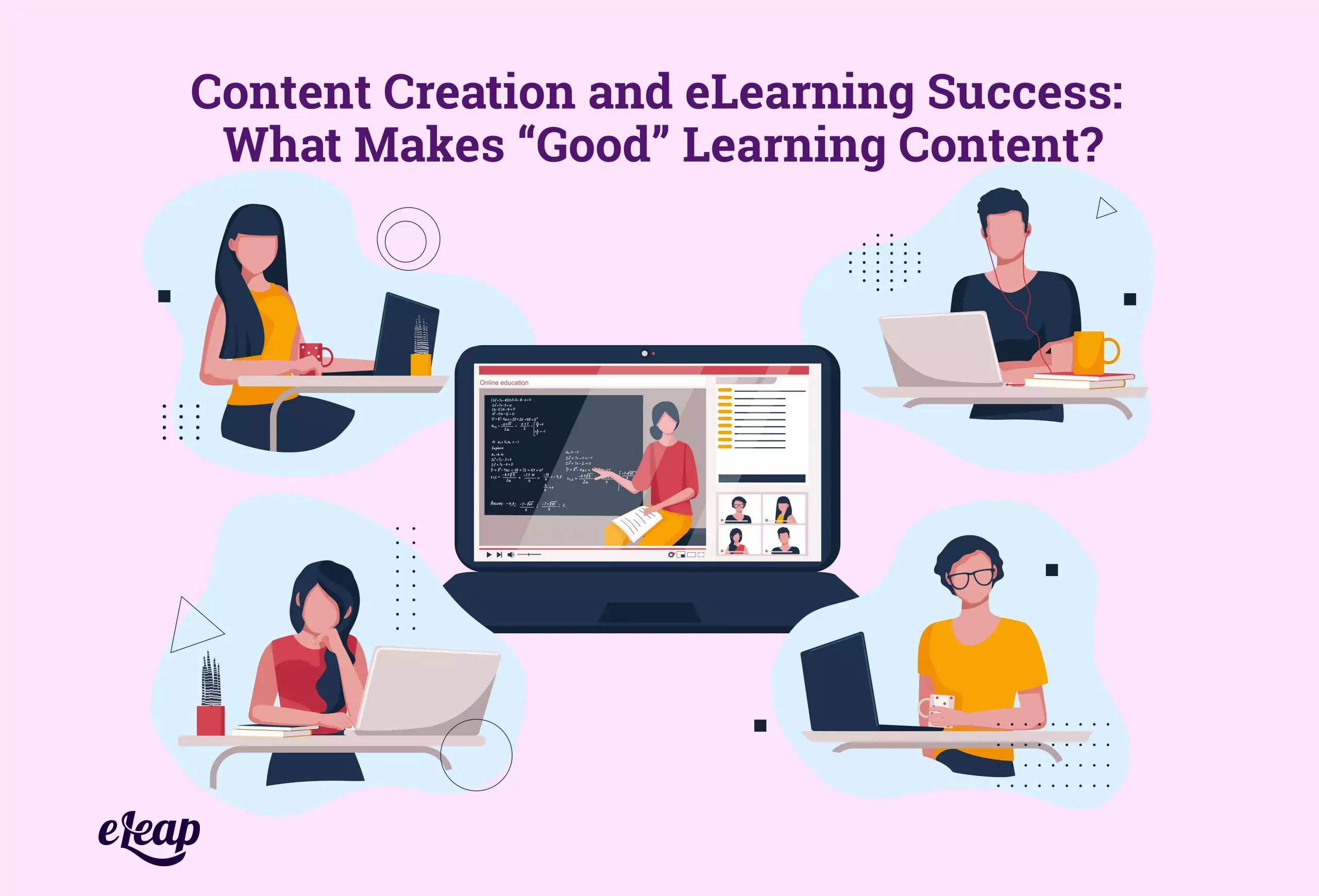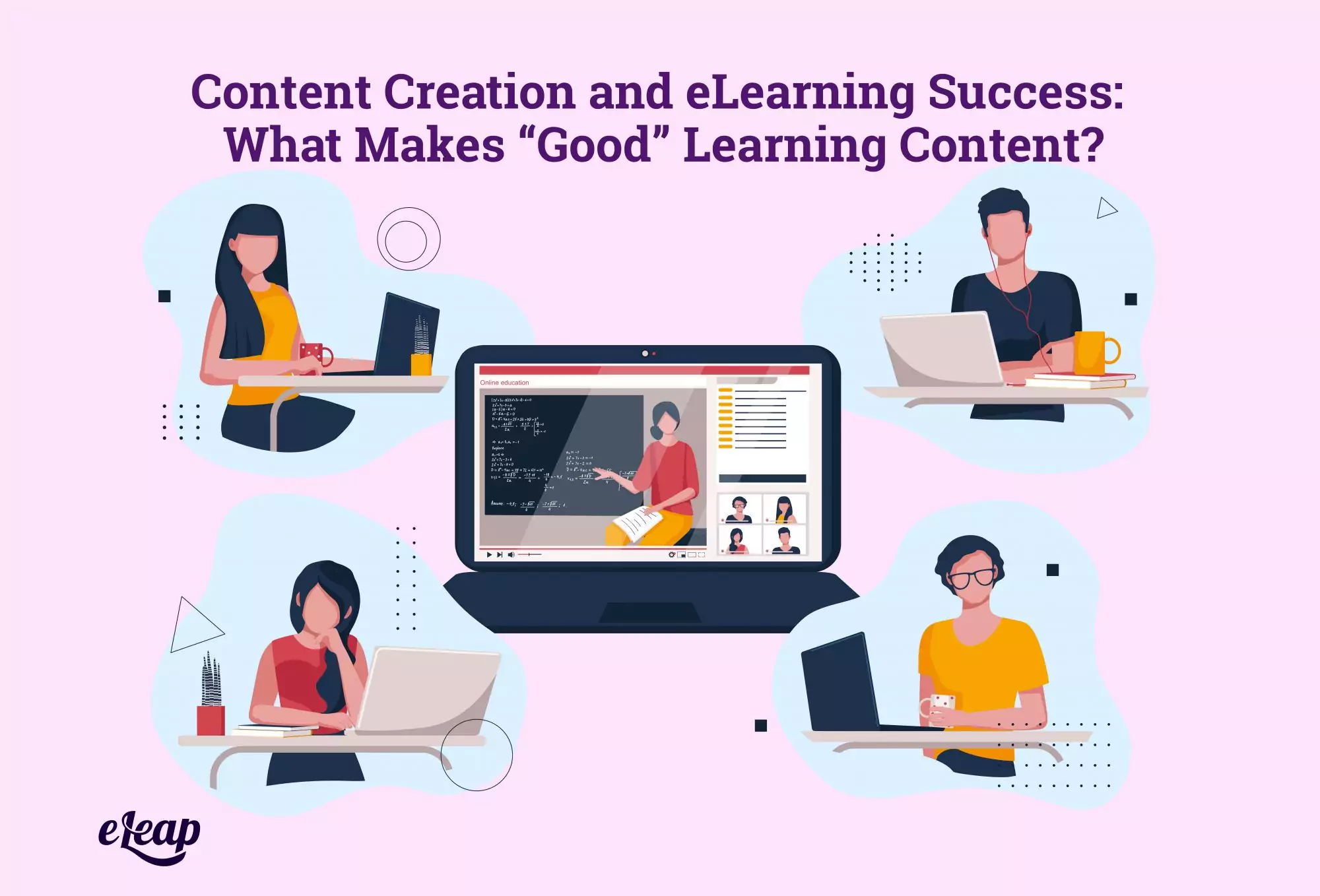Content Creation and eLearning Success: What Makes “Good” Learning Content?

2020 saw eLearning really come into its own. With most teams working remotely, a modern, cloud-based LMS has become an even more critical element for businesses. However, no amount of connectivity or mobile-friendliness can make up for low-quality learning content. Quality content is vital for eLearning success, but this is where many L&D and HR professionals hit that proverbial wall. What makes “good” learning content in the first place? How do you know if your content is doing the trick?
Those are not easy questions to answer. However, with a deep dive into what goes into creating content that drives engagement and information retention, we can begin to connect the dots. In this post, we’ll discuss what makes “good” learning content and how to tell if yours measures up.

What’s the Point of “Good” Learning Content?
The first thing to consider is whether your content actually has a point. What’s the goal? Is that goal clear to a learner when they finish the content? If they wrap up the lesson and wonder what it was all about, your content is certainly not doing its job. There are several ways around this issue, though.
First, start out with a summary. Come right out and tell the learner what will be covered during the lesson. This sets expectations and tells the learner what to look for and what they can expect when the lesson is over, which helps feed into self-assessments of information retention and the value of the content itself (which should be part of your overall measurements for L&D effectiveness).
Second, provide a conclusion that bookends the introduction. This helps your learners connect the dots between the introduction summary and the end of the lesson. It also tells them explicitly what they should have taken away from the lesson, again helping them self-assess when the lesson ends.
Know Your Learners
“Good” learning content must be designed for learners, first and foremost. This requires that you have a good understanding of their needs, goals, and preferences. Content should be relevant, engaging, available on-demand, integrated with your learners’ workflows, and bite-sized. Let’s touch on a few of those to help drive home what they mean.
- Engaging – Engaging content is critical, but what does that really mean? What makes one lesson engaging and another not so much? To create engaging content, you need to connect with your audience and motivate them to take action. Passive experiences and click-through content, on the other hand, are not engaging in any way. Engaging content must be really useful, must connect with learners emotionally, and should require participation.
- Workflow Integration – Good content integrates with your learners’ workflows. How does that work, though? Simply put, your learners should be able to easily apply the lessons learned to their daily activities. They should also be able to complete lessons in a realistic timeframe – most people don’t have two hours to sit down and complete a course during their workday.
- Bite-Sized – Good content is “chunked” or “bite-sized”. This builds on the tip above and ensures that your learners can access the key point without getting bogged down in other details. However, you cannot simply throw out pieces of content here and there. They must build on one another in a logical, sequential manner. Otherwise, what should offer order and a simplified learning experience basically leads to chaos and confusion.
Go Beyond Instructional Design
Yes, instructional design is a critical consideration with eLearning content. However, it’s not the single most important part of creating great content. It’s integral, yes, but there are other considerations you’ll need to make here.
Graphic design is one of the most critical considerations here. Humans are visual creatures, and if your content is poorly laid out or other mistakes are made with design and flow, it can throw off your learners. So, what should you do to ensure that your content benefits from good graphic design? There are several considerations, but not all apply to every piece of content. In general, consider the following:
- Whitespace – How much whitespace is used? Does it balance out the images and text, creating an easy flow with the content? If not, your design could distract the learner, rather than augment their journey.
- Fonts – Are the fonts used easy to read? While it is tempting to use decorative fonts to add the right aesthetic, you should limit that usage. Always strive for clearly legible, highly-readable content first.
- Colors – Color can help add interest to content, but it can also be a distraction. That’s particularly true if you have the wrong background and text colors. Does the text stand out from the background? Do they blur together? Does the contrast leave an afterimage that lingers and distracts the learner?
- Goal-Tied Visuals – Visuals add value and enhance understanding, but if they are not tied to the goals of your content, they may be doing more harm than good. If you cannot clearly connect a visual element to the goal of the content, it may be best to remove it.
Another important consideration of “good” learning content is the user interface. No, the UI has nothing to do with the quality of your content, but it does bear directly on the accessibility of the content. Simply put, it doesn’t matter how high-quality your content is if your learners struggle to navigate to their lessons or through a course.
What makes a good UI design, though? There’s no one-size-fits-all approach, but any decent user interface will share common elements with others, including a streamlined design, intuitive flow, and ensuring that your learners can easily locate what they need when they need it.
The Golden Rule
Finally, understand that “good” learning content puts the learner first in all ways. It should be designed for easy digestion, accessibility with modern devices, such as smartphones, and centralized within your LMS. In fact, the entire learning experience should focus on delivering an optimized learner outcome rather than on meeting arbitrary goals set for corporate learning.